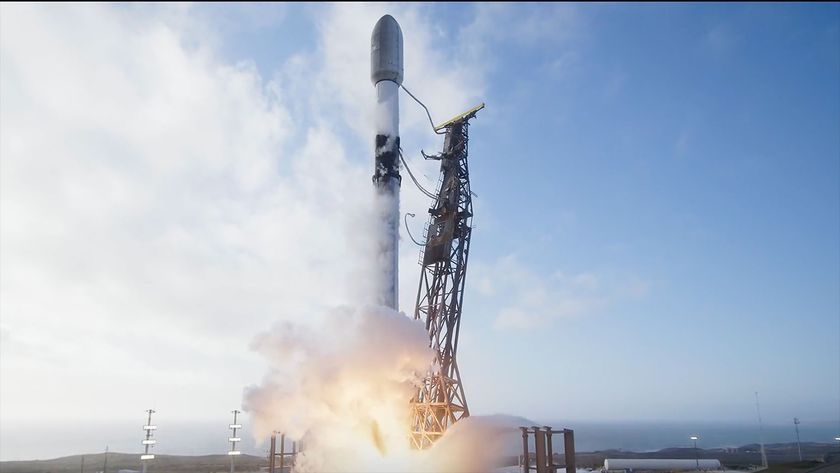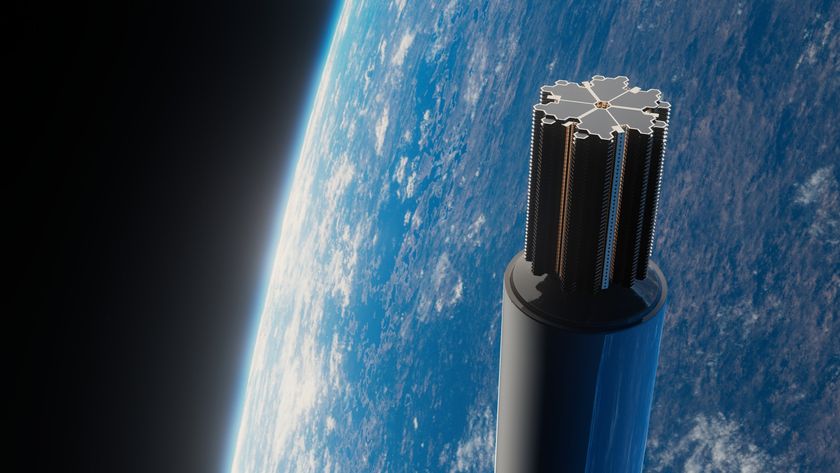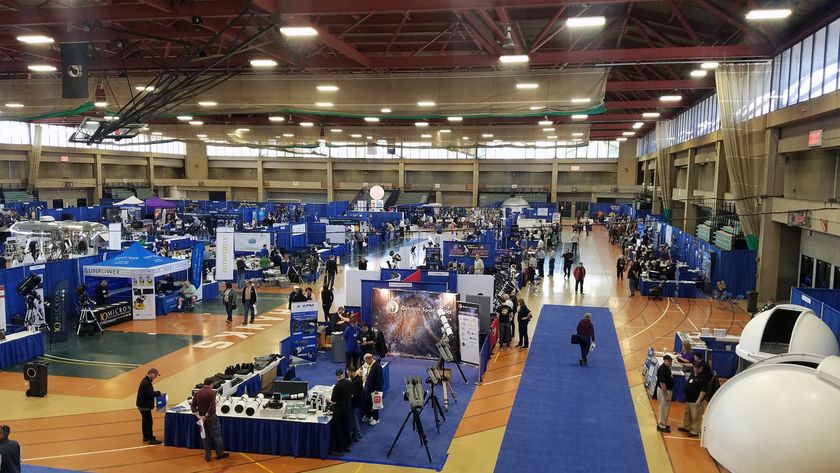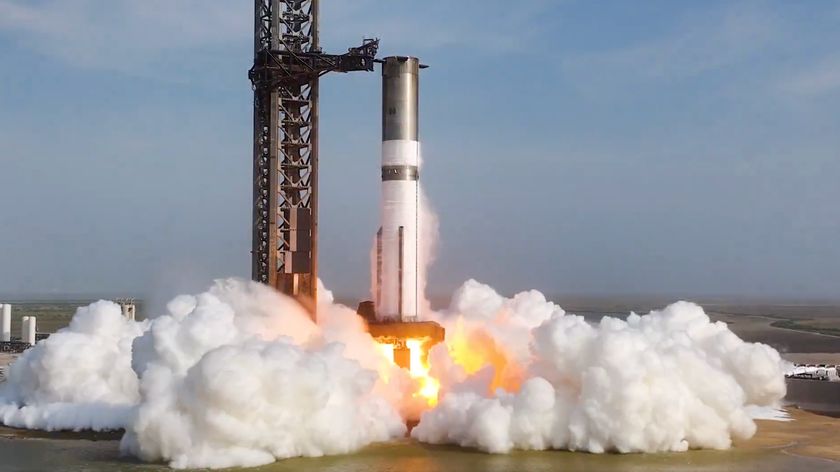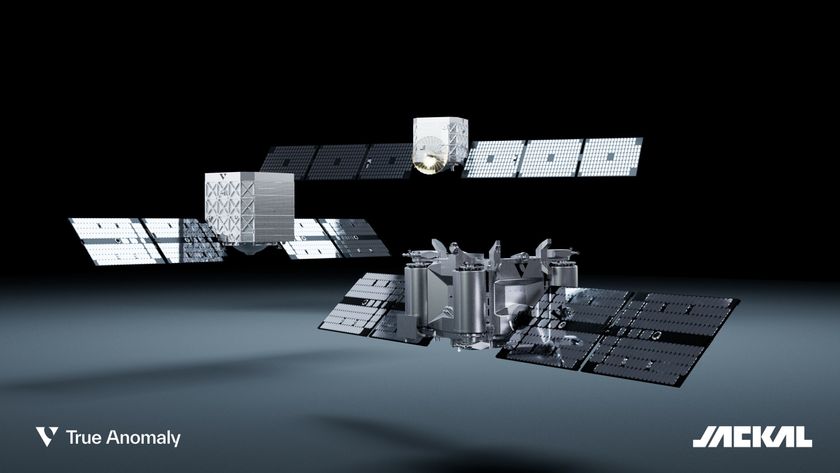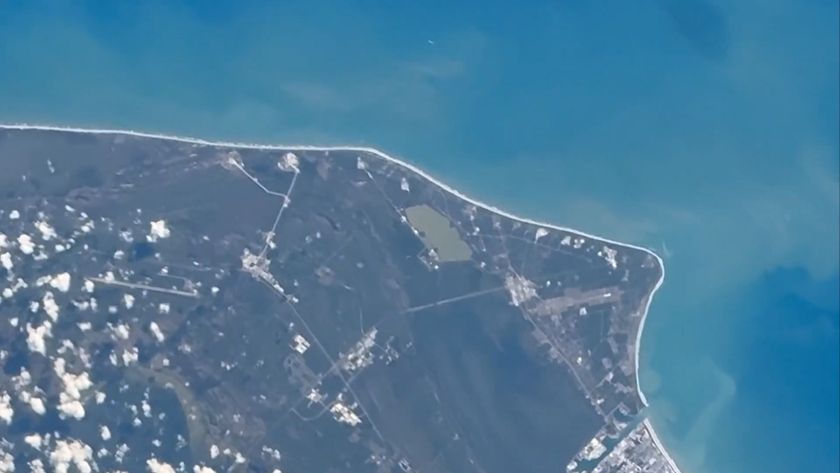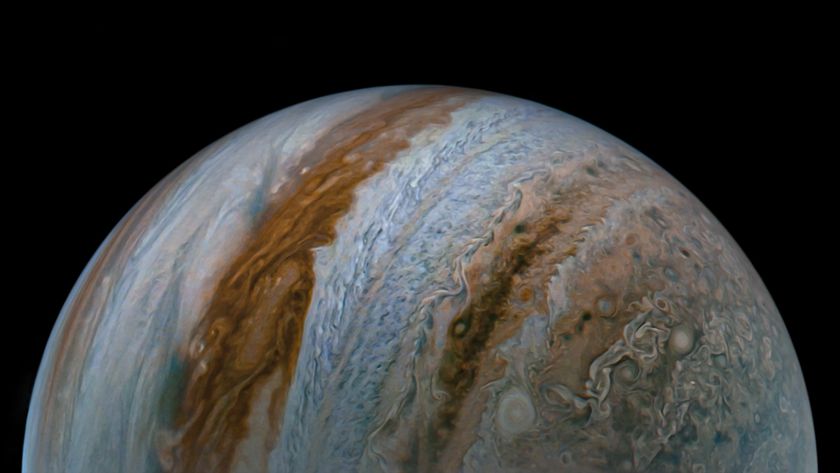Astronomers spot first activity on giant megacomet beyond Saturn
New Zealand-based astronomers had a time-zone advantage while watching the massive comet.
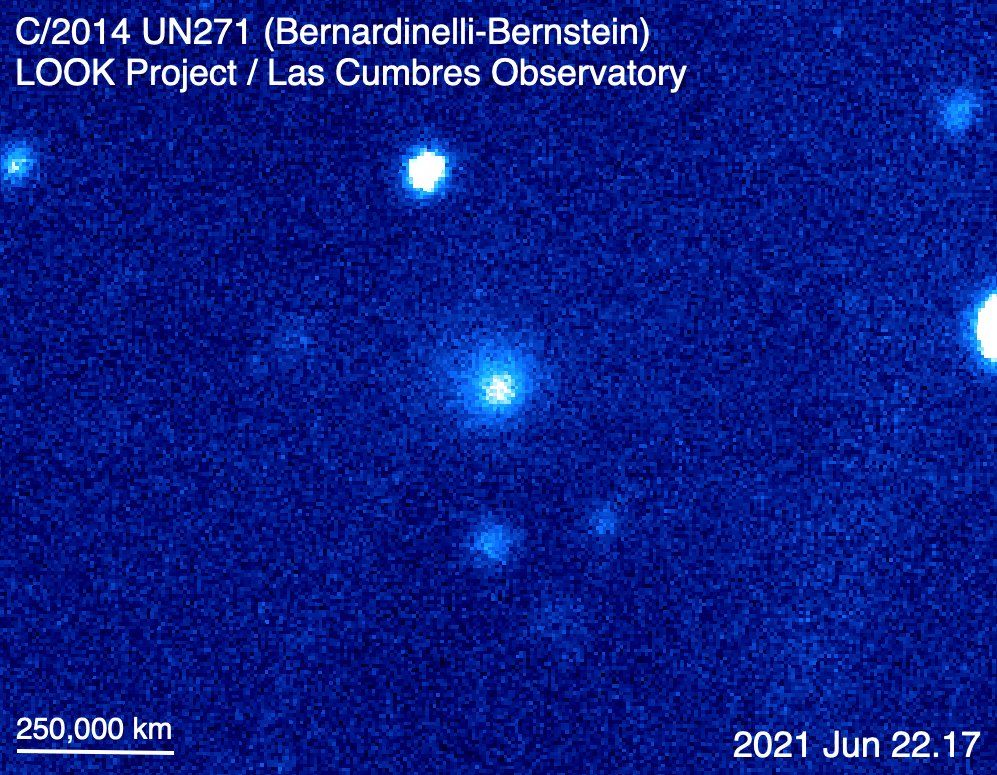
Spotting the first signs of activity on a record-setting comet of gargantuan size came down to a time-zone advantage.
Astronomers in New Zealand were the first to spot a coma, or zone of gas and dust, spreading around the megacomet C/2014 UN271, also known as Bernardinelli-Bernstein, which may be 1,000 times more massive than a typical comet. It could be the most massive comet ever found in all of recorded history.
The team that monitors images captured by the Las Cumbres Observatory (LCO) is spread around the world, and images from one of LCO's 1-meter telescopes hosted at the South African Astronomical Observatory were available on June 23 at midnight EDT (0400 GMT). That happens to be afternoon in New Zealand.
Related: The 9 most brilliant comets ever seen
"The other folks were asleep," recalled LCO team member Michele Bannister, of New Zealand's University of Canterbury, in a statementreleased Wednesday (July 14).
At first glance, however, she thought the new imagery was a bust, thanks to the ever-present problem of satellites going through the field of view of telescopes.
"The first image had the comet obscured by a satellite streak, and my heart sank," she continued. "But then the others were clear enough, and gosh: there it was, definitely a beautiful little fuzzy dot, not at all crisp like its neighboring stars."
Get the Space.com Newsletter
Breaking space news, the latest updates on rocket launches, skywatching events and more!
What caught Bannister's attention was a foamy coma emerging at an incredible distance from the sun. When the image was taken, Bernardinelli-Bernstein was about 19 astronomical units (AU) from the sun. (One AU is the average Earth-sun distance — about 93 million miles, or 150 million kilometers). That's roughly double the orbital distance of Saturn from the sun. Solar energy at that juncture is a fraction of what we enjoy here on Earth.
That said, the comet has a lot of mass available to heat up. Bernardinelli-Bernstein's huge core (or nucleus) is estimated to be more than 62 miles (100 km) in diameter, which is three times as large as the next-known largest comet nucleus — that of Comet Hale-Bopp, a famous naked-eye comet that passed by Earth in 1998. Unfortunately for eager astronomers, however, Bernardinelli-Bernstein won't get very close to our planet for observations.
Bernardinelli-Bernstein's closest approach to the sun will still be beyond Saturn in January 2031, but astronomers have a decade to plan for that approach. If history is any guide, telescopes around the world and in space, along with any spacecraft that happen to be nearby, will peer at the comet to learn as much as possible about its composition and history.

LCO's LOOK Project, which already observes several comets, will continue to watch Bernardinelli-Bernstein; you can see its anticipated viewing schedule here. It is expected to be of help since its network of telescopes allows for a "rapid response" within 15 minutes whenever any outbursts occur, the statement said. But LCO scopes won't be the only ones watching.
"There are now a large number of surveys, such as the Zwicky Transient Facility and the upcoming Vera C. Rubin Observatory, that are monitoring parts of the sky every night," LOOK member Tim Lister, an LCO staff scientist, said in the same statement.
"These surveys can provide alerts if one of the comets changes brightness suddenly," he added. "Then we can trigger the robotic telescopes of LCO to get us more detailed data, and a longer look at the changing comet while the survey moves onto other areas of the sky."
Follow Elizabeth Howell on Twitter @howellspace. Follow us on Twitter @Spacedotcom and on Facebook.
Join our Space Forums to keep talking space on the latest missions, night sky and more! And if you have a news tip, correction or comment, let us know at: community@space.com.

Elizabeth Howell (she/her), Ph.D., was a staff writer in the spaceflight channel between 2022 and 2024 specializing in Canadian space news. She was contributing writer for Space.com for 10 years from 2012 to 2024. Elizabeth's reporting includes multiple exclusives with the White House, leading world coverage about a lost-and-found space tomato on the International Space Station, witnessing five human spaceflight launches on two continents, flying parabolic, working inside a spacesuit, and participating in a simulated Mars mission. Her latest book, "Why Am I Taller?" (ECW Press, 2022) is co-written with astronaut Dave Williams.


